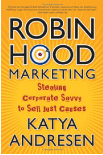What you do over the course of your life changes slowly, and a lot of it remains the same. The part of what you do that you get paid for–now, that may change drastically. How do you remain true to who you have been AND acquire a reputation for being the person who can do the new job? “Know thyself,” said Socrates. Dorie Clark puts it a little differently: “Define your brand, imagine your future.”
Your brand is not a logo or a slogan. It’s how people perceive you, whenever they stop to think about who you are. You need to know how you are perceived, and Clark gives tips on finding that out.
She also explains how you can change your brand when the perception of you is getting in the way of what you want to do with your life. Making connections in your chosen field, getting the feel of it through informational interviews and volunteering, developing new skills where they seem useful, acquiring a mentor: all of these really make you the person who can do the job and build your reputation for being that person.
You can also toot your own horn, as long as you stay on key. “Explain why your transition adds value to others and is an authentic extension of your true nature.”
Dorie Clark was generous to me about a year ago as I started to make communications the center of my work. She helped me to say, “Communications has always been the part of my work I did the best. I’ve done a lot of it in my previous work. Now, I am looking to make it the center of what I do.” If you don’t know Dorie personally, you can still get her advice in her authentic voice in Reinventing You. Highly recommended.


